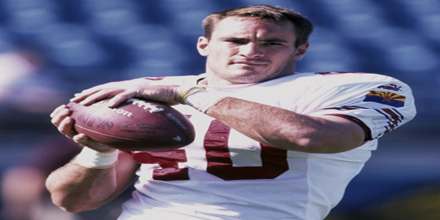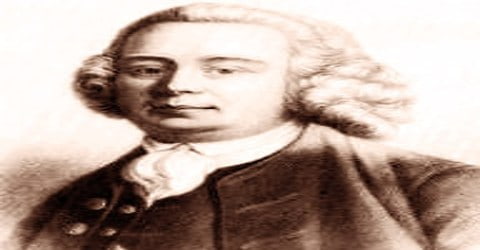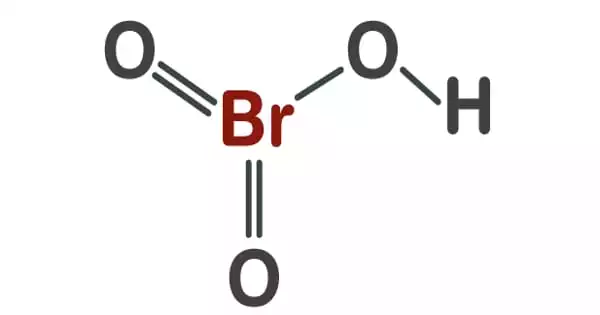Pat Tillman – Athlete, Football Player (1976–2004)
Full name: Patrick Daniel Tillman
Nickname(s): “Pat”
Date of birth: November 6, 1976
Place of birth: Fremont, California, U.S.
Date of death: April 22, 2004 (aged 27)
Place of death: Spera, Afghanistan
Position: Safety
Height: 5 ft 11 in (1.80 m)
Weight: 202 lb (92 kg)
Early Life
Patrick Daniel Tillman was born on November 6, 1976, in Fremont, California, US. He was a professional American football player in the National Football League (NFL) who left his sports career and enlisted in the United States Army in June 2002 in the aftermath of the September 11 attacks. His service in Iraq and Afghanistan, and subsequent death, were the subject of much media attention.
Tillman joined the Army Rangers and served several tours in combat before he died in the mountains of Afghanistan. At first, the Army reported that Tillman had been killed by enemy fire. Controversy ensued when a month later, on May 28, 2004, the Pentagon notified the Tillman family that he had died as a result of a friendly fire incident; the family and other critics allege that the Department of Defense delayed the disclosure for weeks after Tillman’s memorial service out of a desire to protect the image of the U.S. military.
Tillman was the first professional football player to be killed in combat since Bob Kalsu, who died in the Vietnam War in 1970. Tillman was posthumously promoted from specialist to corporal. He also received posthumous Silver Star and Purple Heart medals.
Tillman excelled at football while attending Leland High School, having led his team to the Central Coast Division 1 Football Championship. Tillman’s considerable talent landed him a scholarship to Arizona State University (ASU), which he attended after graduating high school.
At ASU, Tillman thrived on the field and in the classroom. The linebacker helped his team to achieve an undefeated season and to make to the 1997 Rose Bowl game. He won the Pac-10 Defensive Player of the Year and was selected as the ASU Most Valuable Player of the Year in 1997. Tillman also earned awards for his performance as a student, winning the Clyde B. Smith Academic Award in 1996 and 1997; the Sporting News Honda Scholar-Athlete of the Year in 1997; and the 1998 Sun Angel Student Athlete of Year.
The September 25, 2005, edition of the San Francisco Chronicle newspaper reported that Tillman held views which were critical of the Iraq War. According to Tillman’s mother, a friend of Tillman had arranged a meeting for Tillman with author Noam Chomsky, a prominent critic of the U.S. and American foreign and military policy, to take place after his return from Afghanistan. Chomsky has confirmed this.
A report described in The Washington Post on May 4, 2005, prepared at the request of Tillman’s family by Brigadier General Gary M. Jones, revealed that in the days immediately following Tillman’s death, Army investigators were aware that Tillman had been killed by friendly fire, shot three times in the head. Jones reported that senior Army commanders, including General John Abizaid, knew of this fact within days of the shooting, but nevertheless approved the awarding of the Silver Star, Purple Heart, and a posthumous promotion to the rank of Corporal.
Jones reported that members of Tillman’s unit burned his body armor and uniform in an apparent attempt to hide the fact that he was killed by friendly fire. His notebook, in which – according to author Jon Krakauer – Tillman had recorded some of his thoughts on Afghanistan, was also burned; “a blatant violation of protocol.” Several soldiers were subsequently punished for their actions by being removed from the United States Army Rangers. Jones believed that Tillman should retain his medals and promotion, since, according to Jones, he intended to engage the enemy and behaved heroically.
ASU also named the football locker room entryway to Sun Devil Stadium the “Pat Tillman Memorial Tunnel” and made a “PT-42” patch that they place on the neck of their uniforms as a permanent feature. In 2011, Pat Tillman Veteran’s Center in the lower level of the Memorial Union opened on the Tempe campus. Before the 2013 season, the Tillman Tunnel was renovated with graphics, signage, double doors separate the locker room from the tunnel, and television replaying Tillman’s career highlights, sound system and a gate opens up to the field featuring an image of him looking as if he’s leading the team out.
Educational Career
He went to Bret Harte Middle School and helped lead Leland High School to the Central Coast Division I Football Championship. Tillman then went to Arizona State University on a football scholarship.
He started his college career as a linebacker for Arizona State University in 1994.
Academically, Tillman majored in marketing and graduated in three and a half years with a 3.85 GPA. He also earned many academic awards including: the Clyde B. Smith Academic Award in 1996 and 1997; the Sporting News Honda Scholar-Athlete of the Year in 1997; and the 1998 Sun Angel Student Athlete of Year. He was inducted into the College Football Hall of Fame in 2010.
Personal Life
Professional football player and soldier Patrick Daniel Tillman was born to Mary and Patrick Tillman on November 6, 1976, in San Jose, California, the oldest of three sons.
Tillman was very close to his family and high school friends. He repeatedly mentioned in his personal journals during wartime service that he drew strength from and deeply valued his closest friendships, parents, wife and family. Tillman was very committed to his high school sweetheart whom he married just prior to enlistment in the Army Rangers, Marie Ugenti Tillman. He also was very close with his brother, Kevin Tillman, who enlisted with and served alongside him.
Tillman was an atheist. According to speakers at his funeral, he was very well-read, having read a number of religious texts including the Bible, Quran and the Book of Mormon as well as transcendentalist authors such as Ralph Waldo Emerson and Henry David Thoreau. However, responding to religious overtones at the funeral by Maria Shriver and John McCain, his youngest brother, Richard, asserted that “Just make no mistake, he’d want me to say this: He’s not with God, he’s fucking dead—he’s not religious.” Richard added, “Thanks for your thoughts, but he’s fucking dead.” Another article quotes Tillman as having told then-general manager of the Seattle Seahawks Bob Ferguson in December 2003, “You know I’m not religious.”
Playing and Military Career
Tillman was selected by the Arizona Cardinals in the 1998 National Football League (NFL) draft. Over time, he earned his place as a starting player and set a new team record for the number of tackles in 2000. Loyal to his team, Tillman turned down a lucrative contract with the St. Louis Rams to stay with the Cardinals in 2001.
In the 1998 National Football League Draft, Tillman was selected as the 226th pick by the Arizona Cardinals. Tillman moved over to play the safety position in the NFL and started ten of sixteen games in his rookie season.
At one point in his NFL career, Tillman turned down a five-year, $9 million contract offer from the St. Louis Rams out of loyalty to the Cardinals.
Sports Illustrated football writer Paul Zimmerman (“Dr. Z”) named Tillman to his 2000 NFL All-Pro team after Tillman finished with 155 tackles (120 solo), 1.5 sacks, 2 forced fumbles, 2 fumble recoveries, 9 pass deflections and 1 interception for 30 yards.
Tillman finished his career with totals of 238 tackles, 2.5 sacks, 3 interceptions for 37 yards, 3 forced fumbles, 12 pass deflections, and 3 fumble recoveries in 60 career games. In addition he also had 1 rush attempt for 4 yards and returned 3 kickoffs for 33 yards.
In May 2002, eight months after the September 11 attacks and after completing the fifteen remaining games of the 2001 season which followed the attacks (at a salary of $512,000 per year), Tillman turned down a contract offer of $3.6 million over three years from the Cardinals to enlist in the U.S. Army.
When the United States’ invaded Afghanistan, Tillman decided to put his professional career on hold in order to join the U.S. military. “Sports embodied many of the qualities I deem meaningful,” he said in 2002. “However, these last few years, and especially after recent events, I’ve come to appreciate just how shallow and insignificant my role is . . . It’s no longer important.”
After finishing the 2001 season, he planned on enlisting in the U.S. Army with his younger brother, Kevin. His decision to leave the sport to join the military garnered a lot of media attention; some had a hard time believing that Tillman would give up all of the perks of being a professional athlete in order to fight for his country. Yet Tillman turned down a three-year, $3.6 million contract with the Cardinals to enlist. Before starting his military service, Tillman married his high school girlfriend Marie.
Tillman and his brother went through training to become Army Rangers and were assigned to the second battalion of 75th Ranger Regiment in Fort Lewis, Washington. Tillman served in several tours of duty, including time in Iraq as part of Operation Iraqi Freedom as well as a stay in Afghanistan to serve in Operation Enduring Freedom.
Death
On April 22, 2004, Tillman was killed in action while in a canyon in eastern Afghanistan. The first reports indicated that he was shot during a clash with enemy forces during an ambush. Many questions remained unanswered about Tillman’s death at the time, but a week later this account of his death became recognized as the official story, and General Stanley McChrystal approved for the soldier’s Silver Star nomination. Pat Tillman was honored in a nationally televised memorial service on May 3, 2004, in which Senator John McCain delivered the eulogy.
Yet there were still many unanswered questions and conflicting accounts concerning the circumstances surrounding his death. As more details emerged, Tillman’s family began demanding answers from the military. By the end of May, media outlets reported that Tillman was actually killed in an incident of fratricide—otherwise known as “friendly fire.” Official documents would later reveal that the U.S. Army was aware of the possibility of fratricide in regards to Tillman’s death even before his memorial service, but withheld that knowledge from the public and from Tillman’s family until well after the memorial.
A report described in The Washington Post on May 4, 2005, prepared at the request of Tillman’s family by Brigadier General Gary M. Jones, revealed that in the days immediately following Tillman’s death, Army investigators were aware that Tillman had been killed by friendly fire, shot three times in the head. Jones reported that senior Army commanders, including General John Abizaid, knew of this fact within days of the shooting, but nevertheless approved the awarding of the Silver Star, Purple Heart, and a posthumous promotion to the rank of Corporal.
Tillman’s family was not informed of the finding that he was killed by friendly fire until weeks after his memorial service, although at least some senior Army officers knew of that fact prior to the service. According to Krakauer in his book Where Men Win Glory, the extensive coverup that followed Tillman’s death included the military’s order to Tillman’s comrades to lie to his family at the funeral. Tillman’s parents have sharply criticized the Army’s handling of the incident; Tillman’s father charges that the Army “purposely interfered in the investigation” because of the effect it could have on their recruiting efforts, while Tillman’s mother charges that “this lie was to cover their image.”
On March 4, 2006, the U.S. Defense Department Inspector General directed the Army to open a criminal investigation of Tillman’s death. The Army’s Criminal Investigative Division was to determine whether Tillman’s death was the result of negligent homicide.
On March 26, 2007, the Pentagon released their report on the events surrounding Tillman’s death and cover-up.
On July 26, 2007, Chris Matthews reported on Hardball that Tillman’s death may have been a case of deliberate murder by Tillman’s fellow soldiers – specifically that the bullet holes were tight and neat, suggesting a shot at close range. Matthews based his speculation on a report from the doctors who examined Tillman’s body. The following day the Associated Press reported that a doctor who examined Tillman’s body after his death wrote, “The medical evidence did not match up with the scenario as described”, also noting that the wound entrances appeared as though he had been shot with an M16 rifle from fewer than 10 yards (9.1 m) away. A possible motive was not identified. When officers and soldiers were asked during a criminal investigation, they said they were certain the shooting was accidental. According to one of his fellow soldiers, Tillman “was popular among his fellow soldiers and had no enemies.”
Reviews by The New York Times reporter Dexter Filkins of Jon Krakauer’s book Where Men Win Glory: The Odyssey of Pat Tillman noted that the book did well to compile the facts and “nauseating” details regarding the coverup of Tillman’s death. “After Tillman’s death, Army commanders violated many of their own rules, not to mention elementary standards of decency, to turn the killing into a propaganda coup for the American side”, Filkins wrote.
A documentary film, The Tillman Story, was shown at the Sundance Film Festival on January 23, 2010, and was released in August 2010.
On October 19, 2006, Kevin Tillman broke his silence about his brother’s death, lashing out at the Iraq War in a 660-word essay published on Truthdig, a progressive online journal of news and opinion. The essay was widely distributed and was cited in The New York Times and Associated Press.
Honours
After his death, the Pat Tillman Foundation was established to carry forward its view of Tillman’s legacy by inspiring and supporting those striving for positive change in themselves and the world.
A highway bypass around the Hoover Dam has a bridge bearing Tillman’s name. Completed in October 2010, the Mike O’Callaghan–Pat Tillman Memorial Bridge spans the Colorado River between Nevada and Arizona.
Lincoln Law School of San Jose has established the Pat Tillman Scholarship in honor of Tillman. Tillman’s father earned his Juris Doctor from Lincoln in 1983.
On Sunday, September 19, 2004, all teams of the NFL wore a memorial decal on their helmets in honor of Tillman.
On November 12, 2006, during a Cardinals game versus the Cowboys, a bronze statue was revealed in his honor.
In 2004, the NFL donated $250,000 to the United Service Organizations to build a USO center in memory of Tillman. The Pat Tillman USO Center, the first USO center in Afghanistan, opened on Bagram Air Base on April 1, 2005.
The Pacific-10 Conference renamed its annual defensive player-of-the-year award in football to the Pat Tillman Defensive Player of the Year.
The Arizona State University Sun Devils football team wore special uniforms made by Adidas to honor Tillman and his career on October 29, 2015 when they faced the Oregon Ducks. All proceeds from the uniforms went to the Pat Tillman Foundation.
















